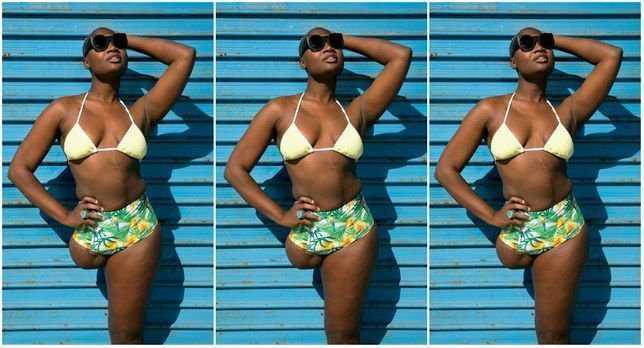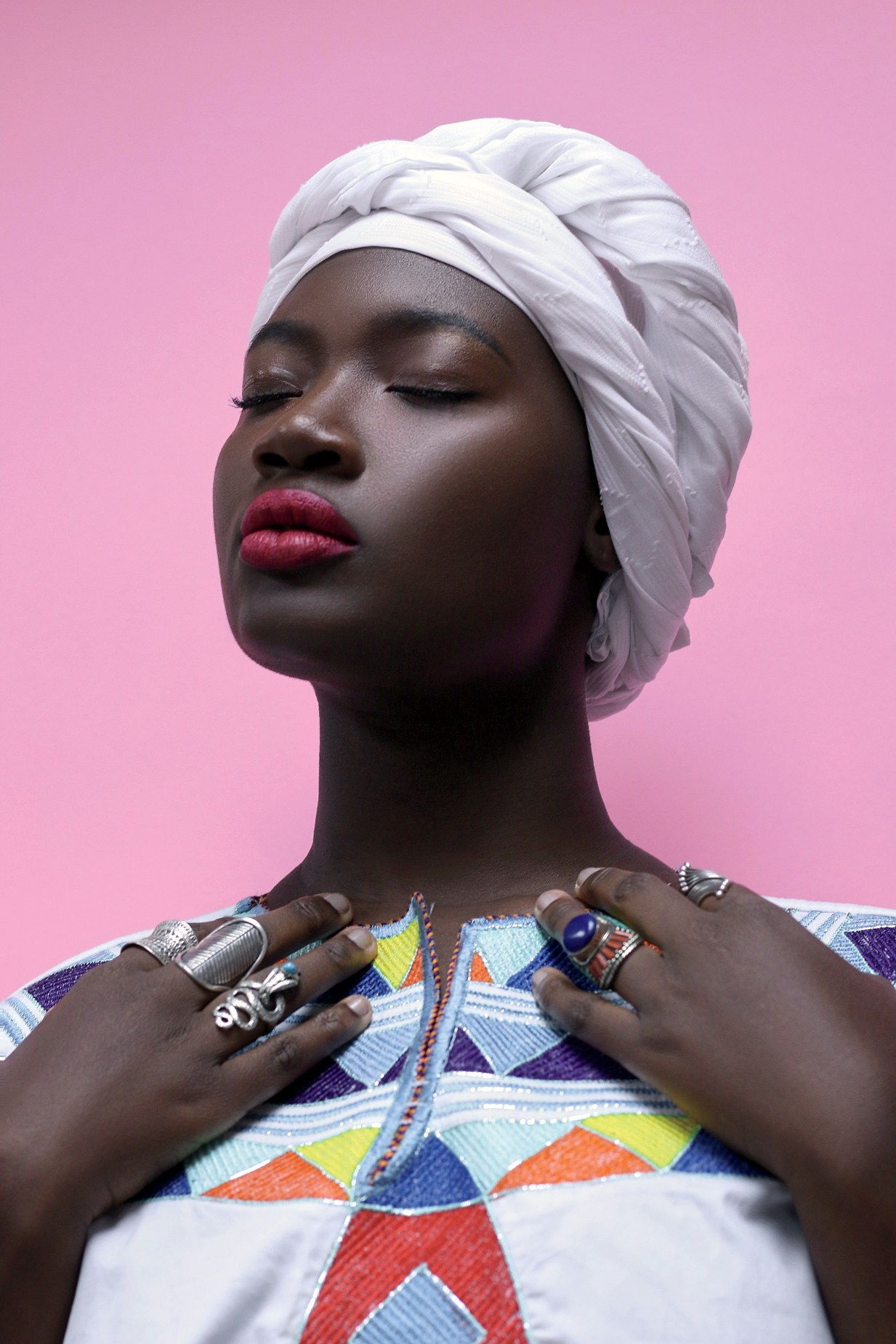Mama Cax on Her Amputation, Beauty, and Body Positivity

When I was 14, I was diagnosed with bone and lung cancer. Following my treatment, I had a hip replacement, which wasn’t successful and which eventually led to getting my right leg amputated. After the amputation, I got fitted for one of those generic prosthetic legs with a foam cover. I so wanted it to match my skin tone and look extremely realistic. I was mostly trying to hide my prosthetic—and to make other people feel comfortable around me. It was draining. I was always conscious about how I looked.
I got really depressed for a while, so a couple of years ago I decided to get in touch with the prosthetic company Alleles, which makes stylish covers. The first cover I got was gold with maroon carvings. I remember feeling proud of it. And from that point, I started to feel a shift in attitude and in how I treated myself. People no longer saw someone who was trying to hide. They saw someone who had pride. The inappropriate and intrusive questions stopped. It sounds like a simple fashion choice, but it really was my first step toward body positivity.
As my confidence grew, so did the way I approached beauty: I used to never wear makeup. And you think that the more comfortable you are in your body, the less makeup you’d probably wear—but for me, it was the other way around. I started wearing more makeup, playing with colors and trying to be bold. That’s a very big deal as a black woman; when I was growing up, a lot of black girls thought that their skin was too dark to wear colorful lipstick. Now I wear purples and deep reds, and eyeshadows in blues or greens. I’m also experimenting with my hair. I usually keep my head shaved because it’s easy for me. But I sometimes grow it out a little to explore different colors.

Getting more comfortable with myself also meant meeting people who I would never have thought related to my story. Whenever I’m talking about body positivity, I have this image in my mind: It’s any woman or girl who is trying to be comfortable with her own body, whether they identify as disabled, able-bodied, a woman of color, LGBTQ, or whatever. But at one point, when I was walking around Manhattan, this guy, probably in his midforties, came up to me and said that he also had an amputation that he had been covering up. And because of me he was going to start exposing his leg. Anyone can have body issues, but I never thought my story would resonate with a man.
Experiences like that push me to help expand ideas around body positivity. For me the body positivity movement emerged with social media, especially Instagram, about three or four years ago. When I first started seeing photos, it was always a certain type of woman, and never a black woman. The movement has definitely expanded, but there is still a missing piece. During International Women’s Day, I saw so many illustrations of diverse women, but none of them with a disability. I’m going to continue talking about these issues so that, hopefully, this movement will be even more inclusive. I didn’t have a role model like that when I was 14, and that’s what I want to change. —as told to Simone Kitchens
Mama Cax is a graduate student focusing on international studies. Follow her @mamacax and mamacax.com

